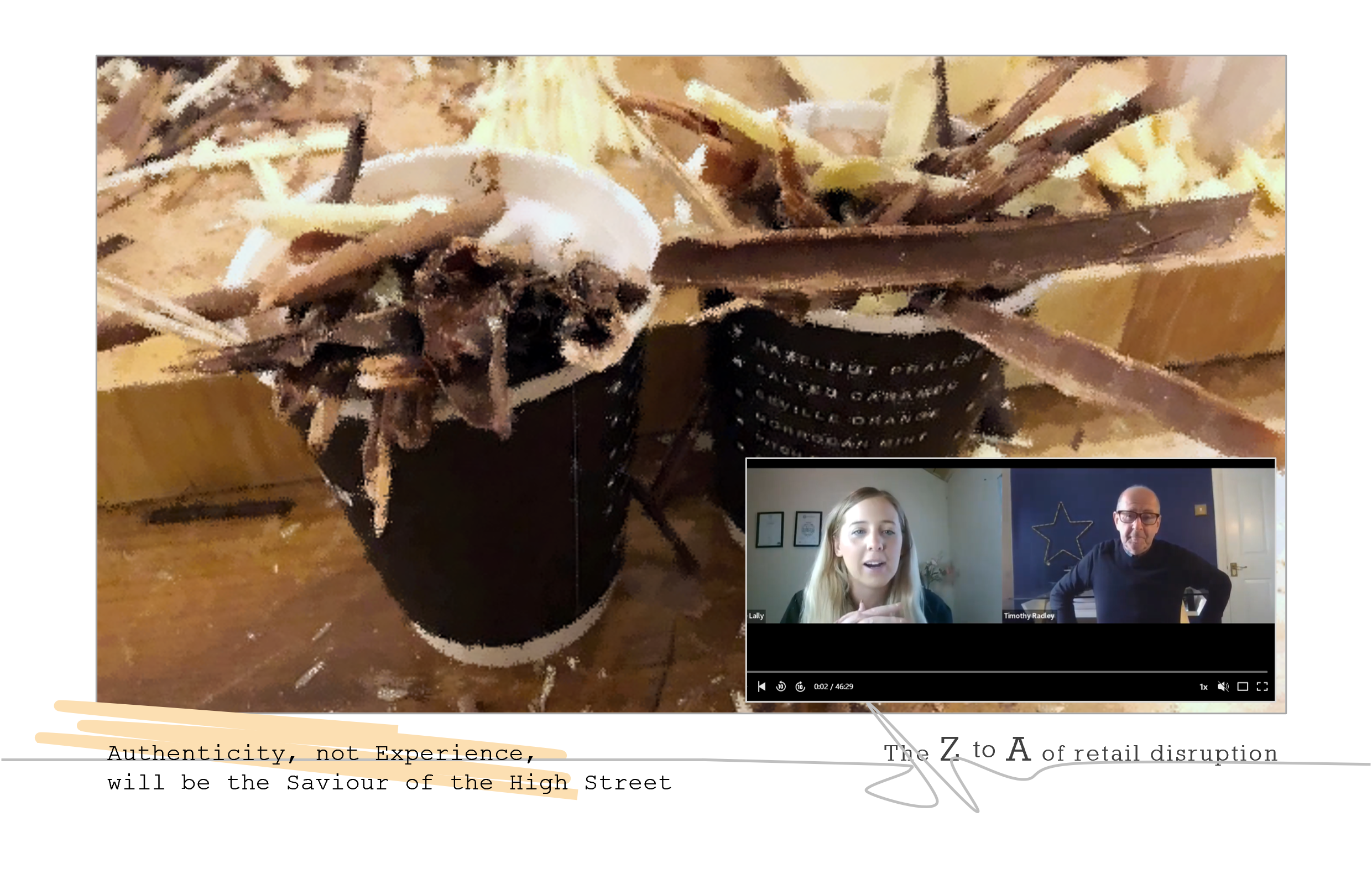Authenticity, not Experience, will be the Saviour of the High Street
Listen to Tim Radley discussing ‘Experiential Retailing’ on the Louise Lally podcast
Please click the link below to follow the discussion…
In the constant, and often misguided, battle between online and bricks ‘n’ mortar retailing, the customer experience is often heralded as the physical shop’s weapon. ‘Experiential Retailing’ will save the high street and traditional town centres.
Good experiences will certainly do no harm in terms of driving footfall and conversion. But it will take more than experience to turn the tide if we ignore the wider picture behind our empty shops.
Firstly, there is a mistaken assumption that great retail experiences are something that can only be achieved in the physical world. This assumption is based on the conviction that physical is fun and digital is functional. Simply not true.
If we are talking of rich and immersive experiences, yes, we can have them in shops, but we can also have even richer and deeper relationships online.
For example, DroppTV is a live streaming retail channel where rap artists wearing the coolest brands play-out their latest hits, and where adoring fans can click and buy directly from the video. Imagine also, a fishing channel where expert anglers and angling advocates haul in huge fish, which stimulate yet again, single-click purchases. In this scenario a new rod, or fishing bait. These immersive digital experiences are intense, entertaining, and convenient. Digital is exciting, and it will take ‘one hell’ of a physical angling shop experience to compete with the theatre of HDTV and Dolby surround sound.
There is also the misconception that great experiences in shops can simply be created from a checklist. A checklist compiled from other best practice shop experiences. As with all things creative in shops, from interior design to visual merchandising, checklists will get you some of the way to achieving success. But experiences contrived from demonstrations, music, digital screens, w-fi and seasonal events…tick…may well ring hollow for many customers.
The key ingredient that both physical and digital experiences need, to be attractive, engaging, and meaningful, is authenticity.
Genuine experiences, from merchandise displays, product interaction, colleague engagement and retail theatre can be felt by customers. There is a difference, and the customer can sense it, and they respond and interact to this authenticity in a very positive way.
These authentic intimate moments can only be evolved, created, and delivered by people with a deep and personal relationship with a retail brand. A passion for its origins and values, its products, and its proposition.
Authenticity changes the experience. A technically balanced but uninspiring table display can become a buzzing magnet for curious customers, an empty space echoing with hollow music is transformed into a bustling intense experience, full of the sounds of shopping.
‘Experiential Retailing’ must be authentic. Retail brands must be genuine. Town centres and high streets need to be galvanised by original distinctive shops run by enthusiastic and engaged shopkeepers.
The artifice of brands going through the experiential motions is no longer valid for the customer, or commercially viable for the business. Too many checklist experiences have simply added monotony and mediocrity to our retail mix.
